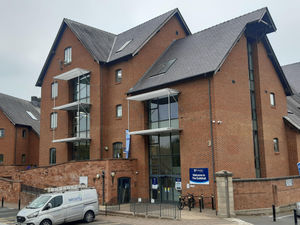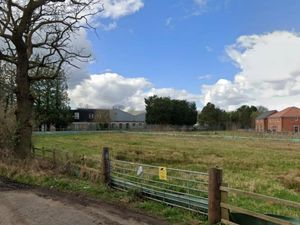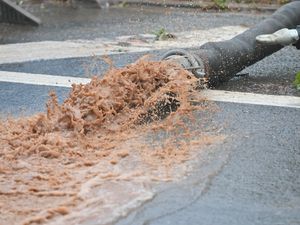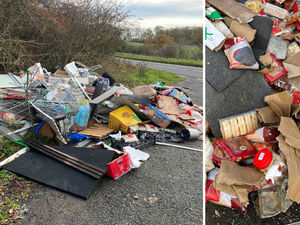Drones - the craze that has really taken off
It is the craze that has taken off – literally. Once the US Air Force's secret weapon in the Vietnamese War, drones can now be bought for as little as £20.
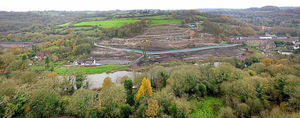
They are now being used by everyone from amateur photographers to the emergency services, offering a bird's-eye view to anyone who wants it.
And hundreds could soon be whizzing over our heads as online retail giant Amazon looks to deliver parcels to your home by drone.
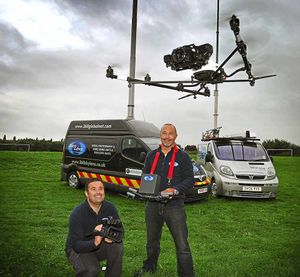
Former Shropshire Star photographer Paul Watkins, who runs the Skylens aerial photography company, was one of the first people to spot their potential about eight years ago when he invested £25,000 in his first drone.
"We have always kept on top of technology, we had developed telescopic masts to do photography from vehicles, and we had also developed helium balloons to take pictures from the sky," he says.
"When I saw these being used by the military I thought they were absolutely spot-on for photographic use."
And he says he was never in any doubt that as the technology evolved, that demand for drones – or unmanned aerial vehicles (UAV) as they are more formally known – would be very large indeed.
The sales of drones are now in their thousands, from professional ones costing tens of thousands of pounds to small units sold for £20 in toy shops. And Mr Watkins says the technology has made huge strides over the past few years.
"The original system could not do half of the things that we can do now," he says.
"It could fly up to the maximum height of 400ft, but it could only carry a small lightweight camera.
Got a great video or photos taken with a drone?
Send them to digital@shropshirestar.co.uk and we'll showcase the best of them.
Here are a couple of examples:
"They can now carry much bigger camera systems, and they are a lot more stable, and they can cope with stronger winds, four or five times stronger than they used to be.
"They can travel more quickly, although we are regulated by how quickly they fly."
And with the rise of large drones used for film, surveillance and data-gathering, regulation of UAV use has become an increasingly thorny issue.
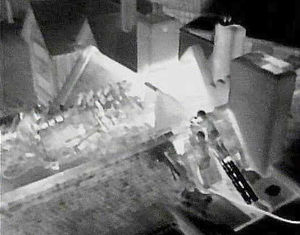
When the use of drones was limited to the military and a tiny number of specialist photographers, there was little legislation about their use.
However, in January 2010, the Civil Aviation Authority introduced new regulations that require drone surveillance and data operators to obtain permission before commencing a flight within a congested area or in proximity to people or property.
The Air Navigation Order 2009 says operators of small, unmanned surveillance aircraft must not fly them over or within 164 yards of any congested area, over or within the same distance of an organised open-air assembly of more than 1,000 people, or within 55 yards of any vessel, vehicle or structure not under the user's control, unless they have obtained permission from the CAA.
It also states that users must maintain direct visual contact with the drone throughout its flight path so they can avoid collisions with people and buildings.
Mr Watkins says that while the rules are strict enough, there are issues with enforcement, with many people either ignoring the laws or pleading ignorance.
"I think it's only a matter of time before a major incident happens because people have been flying dangerously. Sooner or later somebody will get hurt," he says.
Pros:
Cost effective drones can be be picked up for as little as £20 from toy shops
New dimensions it offers a new tool for businesses using them
Data collection drones have been used for film, surveillance and data-gathering
Emergency services West Midlands Fire Service has used a drone called its Incident Support Imaging System which is used to provide live video footage and high definition stills pictures
Fun used safely, drones can be a fun way to get unique footage
Cons:
Privacy using drones at public events and in public places could be seen as an intrusion in privacy
Unregulated rules are still evolving
Risk of injury there is concern that the devices could pose a safety risk especially if used in busy areas. Pop star Enrique Iglesias was injured, suffering sliced fingers after grabbing a drone mounted camera on stage
Damage there is a danger that drones could cause damage to property
Police this week reminded revellers that this year's V Festival in Weston Park, near Shifnal, will be a strict no-fly zone. The warning comes after pop star Enrique Iglesias sliced his finger on stage in Mexico when a drone flew to close to him during the concert. He continued to perform with his hand wrapped up, but was airlifted to hospital after the show.
Ironically, in previous years police have themselves used drones for crowd control at the event.
Inspector Paul Barker, from Staffordshire Police's Tactical Planning Unit, says its vehicle has a limited flight capability, and can operate in various scenarios using different payloads including a thermal camera.
"It has been used, and is available to use, in the search for missing persons, to search hazardous environments for people and objects and it can record still and video images for evidential purposes," he says.
"The UAV can be requested to support any police activity/operation at any time."
The device has already been used to catch two men from Stoke-on-Trent who were discovered on Cannock Chase with a deer carcass in their van.
Shropshire Fire Service does not at present have a drone, although press officer Malcolm Stevenson said it had been looking into the possibility of getting one.
The neighbouring West Midlands Fire Service does use a UAV which it calls its Incident Support Imaging System.
Andy Cashmore, of the fire service, said: "It is intended that it will be used in emergency situations to gather imaging data which will be used by the incident commander to inform their decision making processes and to provide information for debrief purposes."
And while drones are now a key piece of kit in the fight against crime, in the first prosecution of its kind in England a man will stand trial accused of flying a drone illegally.
Nigel Wilson, from Nottingham, will stand trial at Westminster Magistrates Court in September accused of 15 breaches of the Air Navigation Order.
The 42-year-old admitted two counts, but will go on trial for the remaining 15.
Mr Wilson admitted two counts of not maintaining visual, unaided contact with an unmanned surveillance aircraft to monitor its flight path.
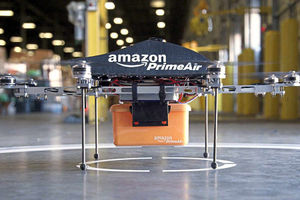
They relate to incidents over the north bank of the River Thames on September 27 and during Manchester City v Tottenham Hotspur at the Etihad Stadium, Manchester, on October 18.
He denied other charges of flying a "small unmanned surveillance aircraft" without permission during football matches at various grounds.
They included Arsenal's Emirates Stadium, Liverpool's Anfield ground as well as Nottingham Forest's City Ground, Derby County's iPro stadium and the King Power Stadium in Leicester.
The charges also claim he breached regulations by failing to maintain direct visual contact with the drone as he flew it near landmarks including Buckingham Palace and the Palace of Westminster.

